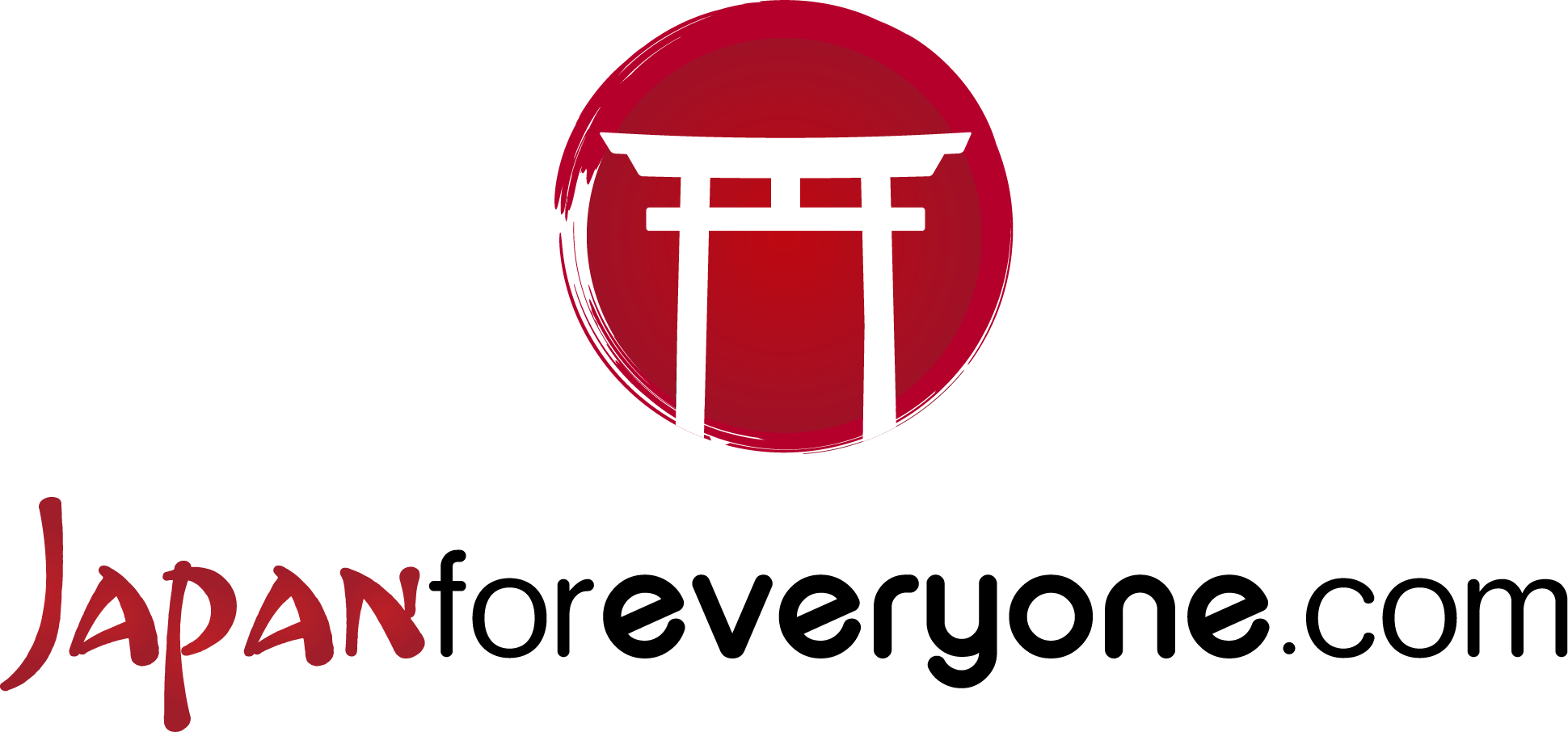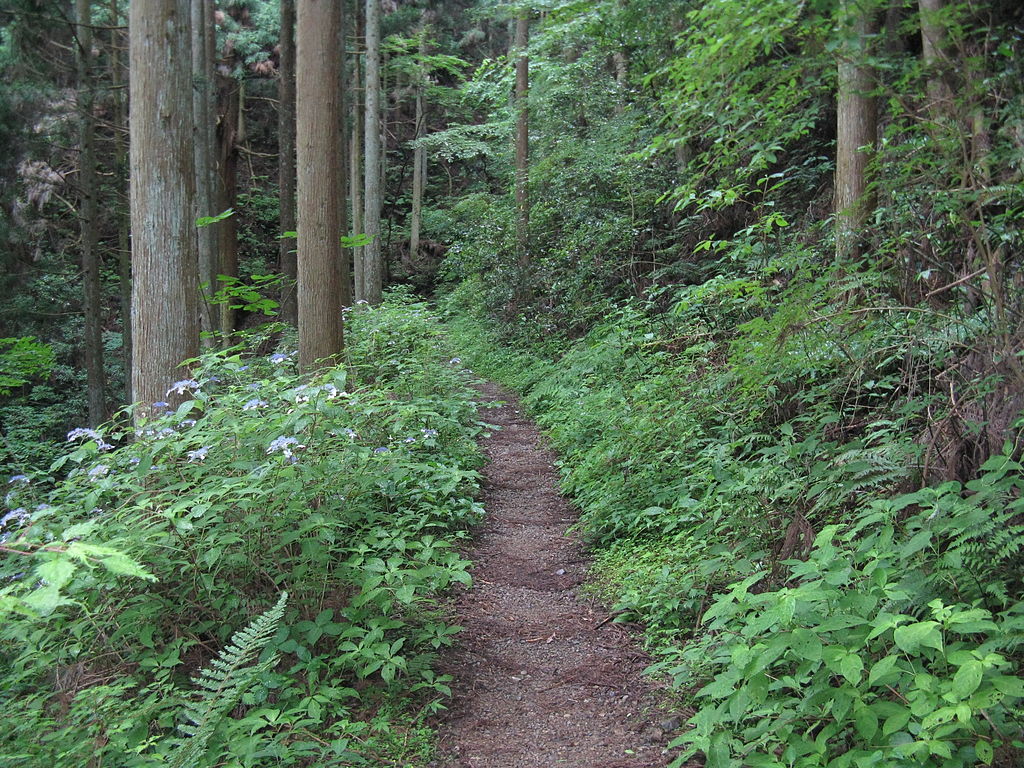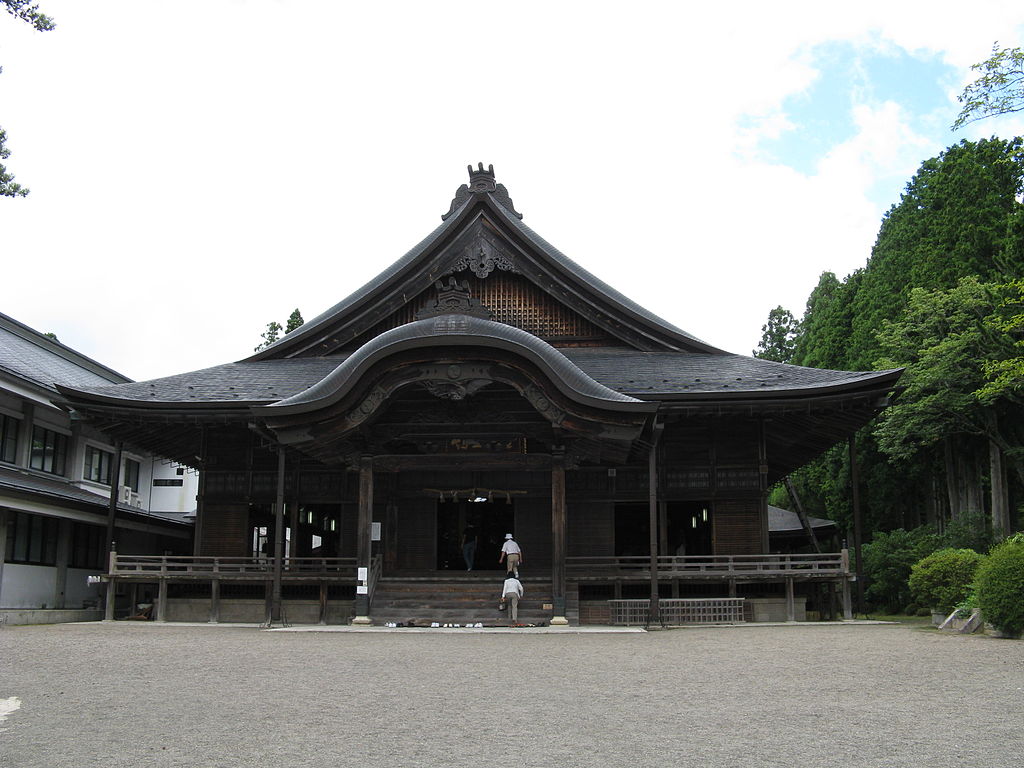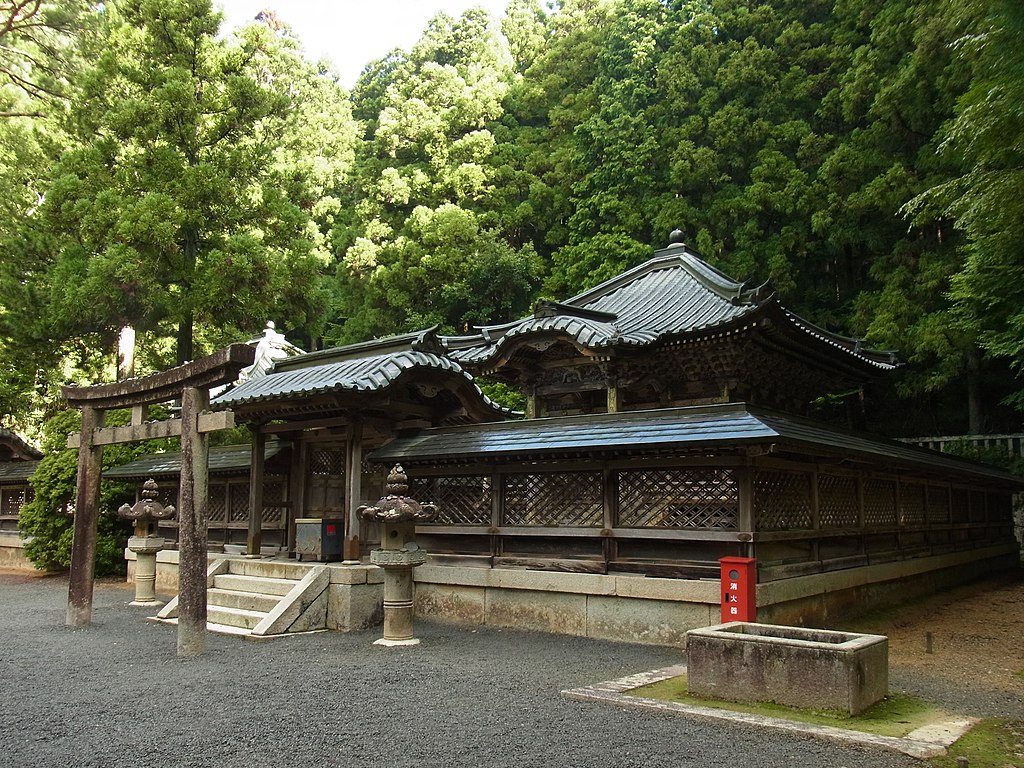What to do in Koyasan
Koyasan is located in Kansai, south of Osaka. It is one of the most spiritual places in Japan.
At the tourist office you can buy a Combination Ticket for 2500 Yen. This ticket allows you to visit the following places: Kongōbuji Temple, Kondō, Daitō, the Reihōkan Museum, Daishi Kyokai and the Tokugawa family mausoleum. At the Daishi Kyokai you can participate in the ‘jukai’ ceremony, the ritual for receiving Buddhist precepts, while at the Okuno-in you can receive a souvenir.
Koyasan PDF Brochure (with map, train and bus timetables)
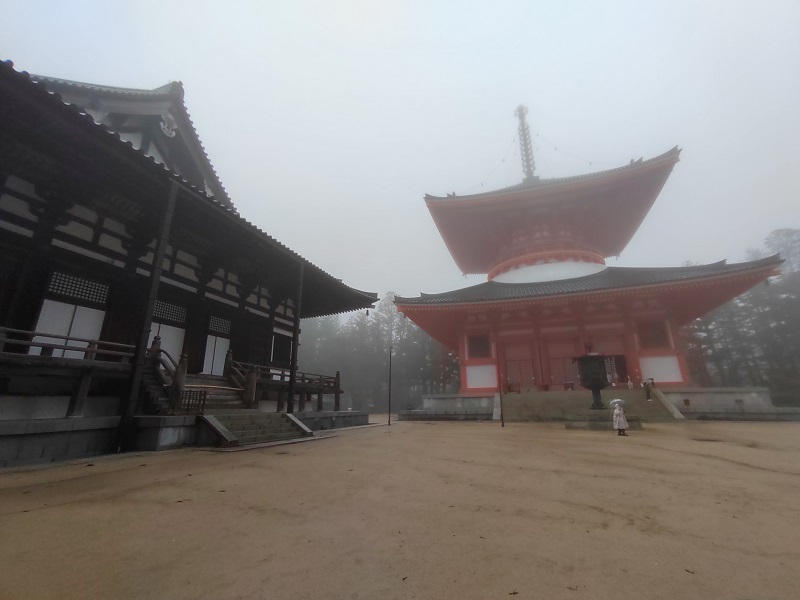
Photo by Japanforeveryone.com
Book your excursion on GetYourGuide.com
Overnight stay in a Buddhist temple (Shukubo)
Staying overnight at a Buddhist temple (Shukubo) in Koyasan is a unique experience that offers an authentic welcome and spiritual connection to the Buddhist tradition. Visitors can immerse themselves in the tranquillity of the tatami rooms, participate in early morning practices such as meditation and mantra recitation, and enjoy delicious vegetarian meals prepared by the monks. In addition to experiencing the serene and contemplative atmosphere of the temples, guests can explore the lush gardens, admire the artwork and participate in Buddhist ceremonies. An overnight stay at a temple in Koyasan is a unique opportunity to experience Japanese spirituality and culture first-hand.
The typical cost for an overnight stay is between 9,000 and 15,000 Yen per person per night, including breakfast and dinner. Most temples accept cash only.
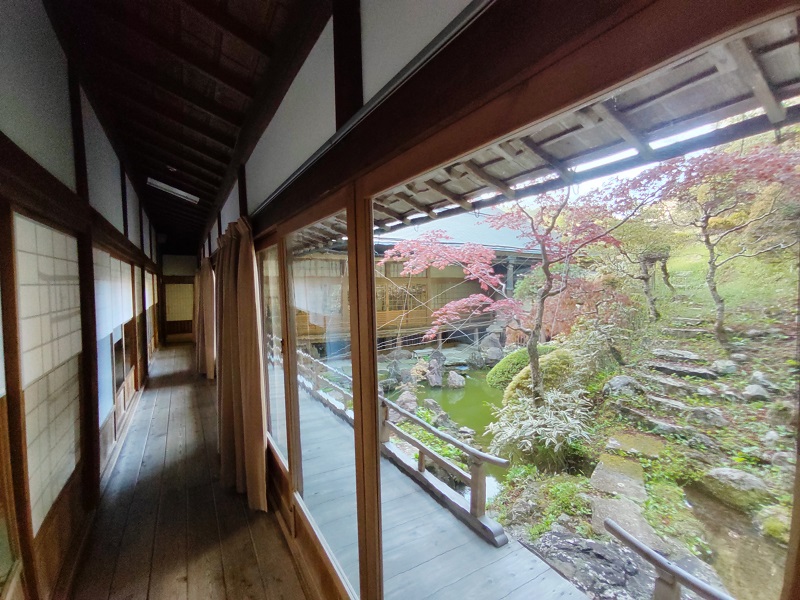
Photo by Japanforeveryone.com
Okuno-in Temple
The Okunoin Temple is one of the most sacred and important Buddhist temples in Japan, located in Koyasan Cemetery. A tree-covered path surrounded by nature leads to this sacred place, where the remains of the founder of the Shingon, Kobo Daishi, rest. Thousands of stone lanterns illuminate the path, creating a mystical and majestic atmosphere. Visitors can admire traditional Japanese architecture, Buddha statues and the sacred tower of a thousand lanterns. Visiting the Okunoin temple is a spiritual and cultural experience not to be missed by travellers to Koyasan.
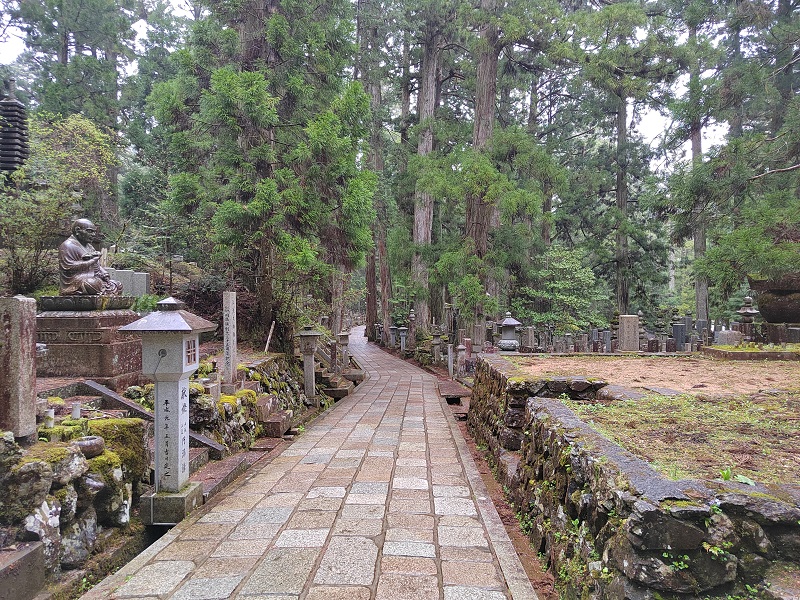
Photo by Japanforeveryone.com
Practical information
| View location on Google Maps | |
| Torodo (Hall of Lanterns) | |
| 6:00-17:30 | |
| No closing days | |
| Free | |
| Gokusho (Offering Hall) | |
| 8:30-17:00 | |
| No closing days | |
| Free | |
| From the centre of town walk eastwards for 10-15 minutes until you reach the Ichinohashi Bridge. From here there is a path leading to the temple Alternatively from the Senjuinbashi bus stop get off at the Ichinohashi-guchi (bridge) stop or further on at the Okunoin-mae stop |
Kongobuji Temple
The Kongobuji Temple is the main temple of Shingon Buddhism and the spiritual seat of the order. Located in Koyasan, Kongobuji is one of the most important Buddhist temples in Japan and offers breathtaking views of the valley below. Known for its traditional Japanese architecture and temple gardens, Kongobuji also houses numerous Buddhist artworks. Visitors can take part in the tea ceremony at the Urasenke School, or seek peace and meditation in the garden certified by the Japanese Gardening Association and the Society of Landscape Architects. The Kongobuji temple is a must-see for anyone visiting Koyasan.
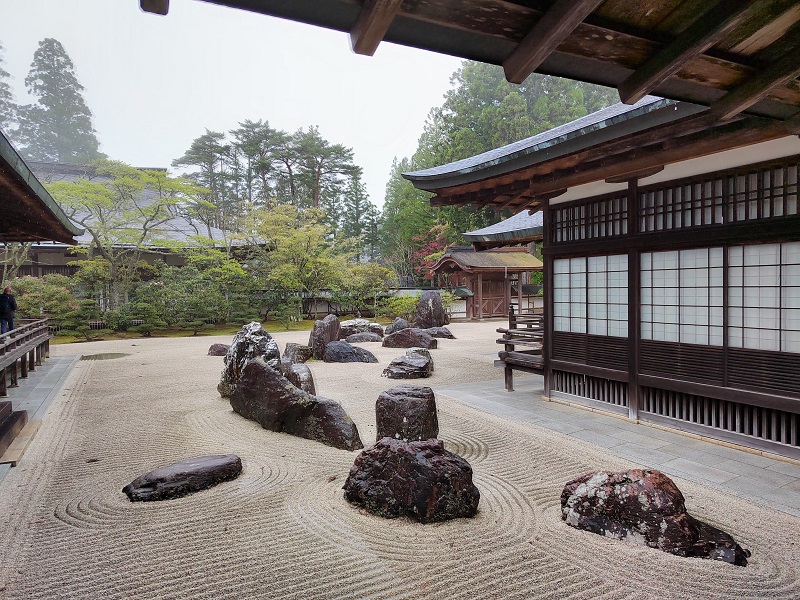
Photo by Japanforeveryone.com
Practical information
| View location on Google Maps | |
| Official website |
|
| 8:30-17:00 Last entry 30 minutes before closing time |
|
| No closing days | |
| 1000 Yen Included in the 2500 Yen combination ticket |
|
| 5 minutes’ walk west of the Senjuinbashi bus stop |
Garan
Garan is one of the most important spiritual places in Koyasan, where visitors can immerse themselves in Buddhist meditation and prayer. Consisting of numerous sacred buildings and temples, Garan is considered the spiritual centre of Koyasan. Highlights of the complex include the Konpon Daito, a five-storey pagoda and Kondo Hall, famous for its statues of the Four Heavenly Kings. The sacred site of Garan also hosts various cultural events throughout the year, including the fire ceremony and sutra recitation. Garan is an enchanting and significant place for visitors to Koyasan.
Adam Jones from Kelowna, BC, Canada, CC BY-SA 2.0, via Wikimedia Commons
Practical information
| View location on Google Maps | |
| Always open | |
| No closing days | |
| Free | |
| Kondo hall and Konpo Daito Pagoda | |
| 8:30-17:00 | |
| No closing days | |
| 500 Yen (both) Included in the 2500 Yen combination ticket |
|
| 5 minutes’ walk west of the Senjuinbashi bus stop |
Reihokan Museum
The Reihokann Museum in Koyasan is an extraordinary place that holds a vast collection of Buddhist cultural treasures. This museum was founded in 1932 and houses more than 1,300 objects, including Buddha statues, scroll paintings, ancient manuscripts and calligraphy. Visitors will have the opportunity to admire masterpieces of Japanese Buddhist art and immerse themselves in the rich history of Koyasan. The Reihokann Museum is a cultural treasure that offers a valuable window into the spirituality and art of Buddhism, a must for art and history lovers visiting Koyasan.
I, KENPEI, CC BY-SA 3.0, via Wikimedia Commons
Practical information
| View location on Google Maps | |
| Official website |
|
| 8:30-17:30 (until 17:00 from November to April) | |
| 28 December to 4 January | |
| 1300 Yen (200 Yen discount for Koyasan World Heritage Ticket or Kansai Thru Pass holders) | |
| 5 minutes’ walk west of the Senjuinbashi bus stop |
Pilgrimage path (Koyasan Choishi Michi)
The Koyasan Choishi Michi Pilgrimage Trail is a sacred path that leads Buddhist worshippers to the majestic Mount Koyasan. Along its 23.5 kilometres, the path is dotted with 180 pilgrimage stones called ‘Choishi’ marking the way.
This ancient path offers pilgrims a unique experience of introspection and faith, allowing them to immerse themselves in the natural and spiritual beauty of the surrounding mountains. Walking the Koyasan Choishi Michi Pilgrimage Trail is an authentic way to explore Koyasan and connect with the religious and historical tradition of this sacred mountain.
I, KENPEI, CC BY-SA 3.0, via Wikimedia Commons
Practical information
| The path starts at the Daimon gate in the western part of the village and arrives at the Kudoyama station of the Nankai |
Daishi Kyokai
Daishi Kyokai, located in Koyasan, is an important religious organisation that promotes the teachings of the founder of Shingon Buddhism, Kobo Daishi. Founded in 1934, Daishi Kyokai is a centre for the study and practice of Japanese esoteric Buddhism. It offers spiritual training programmes and organises cultural and religious events for its members and the local community. Daishi Kyokai is committed to perpetuating the wisdom and teachings of Kobo Daishi, contributing to the spread of spirituality and peace in the Koyasan region and beyond.
I, KENPEI, CC BY-SA 3.0, via Wikimedia Commons
Practical information
| View location on Google Maps | |
| 8:30-17:00 | |
| No closing days | |
| Free | |
| 5 minutes’ walk west of the Senjuinbashi bus stop |
